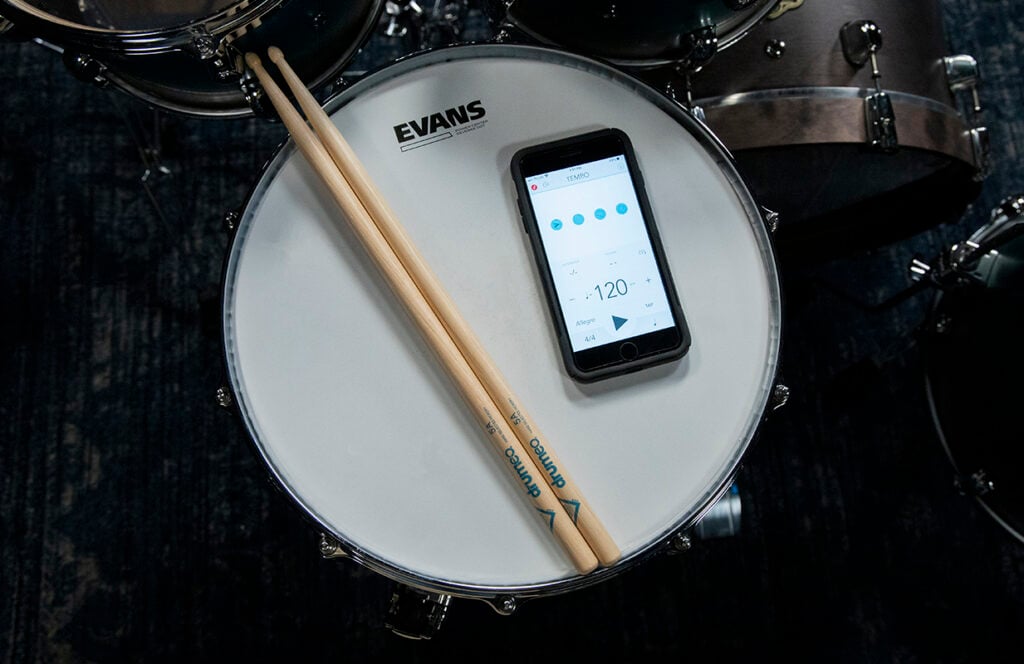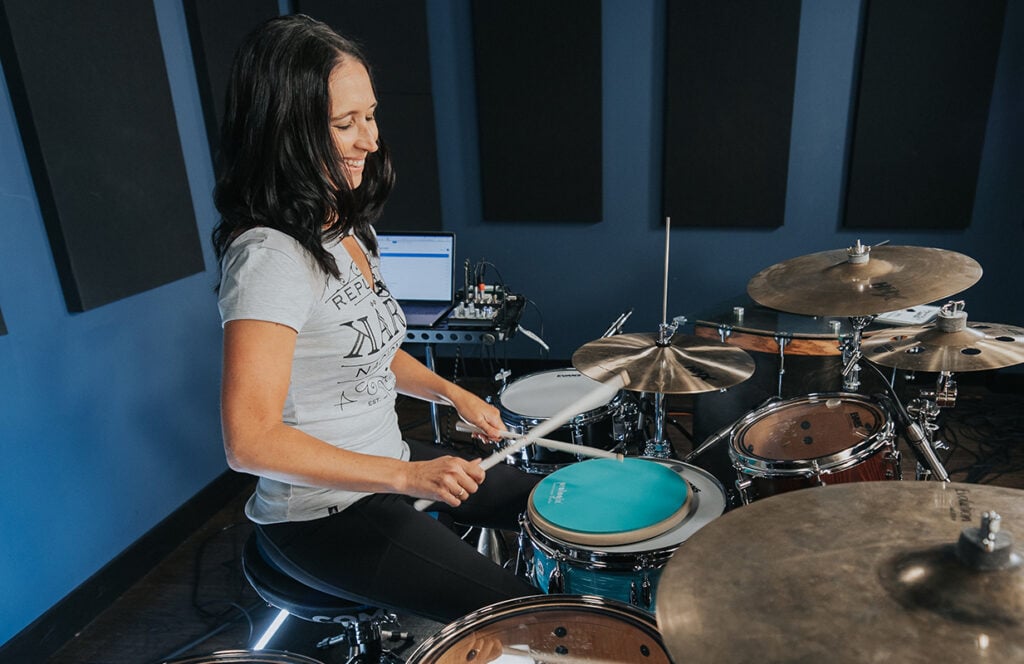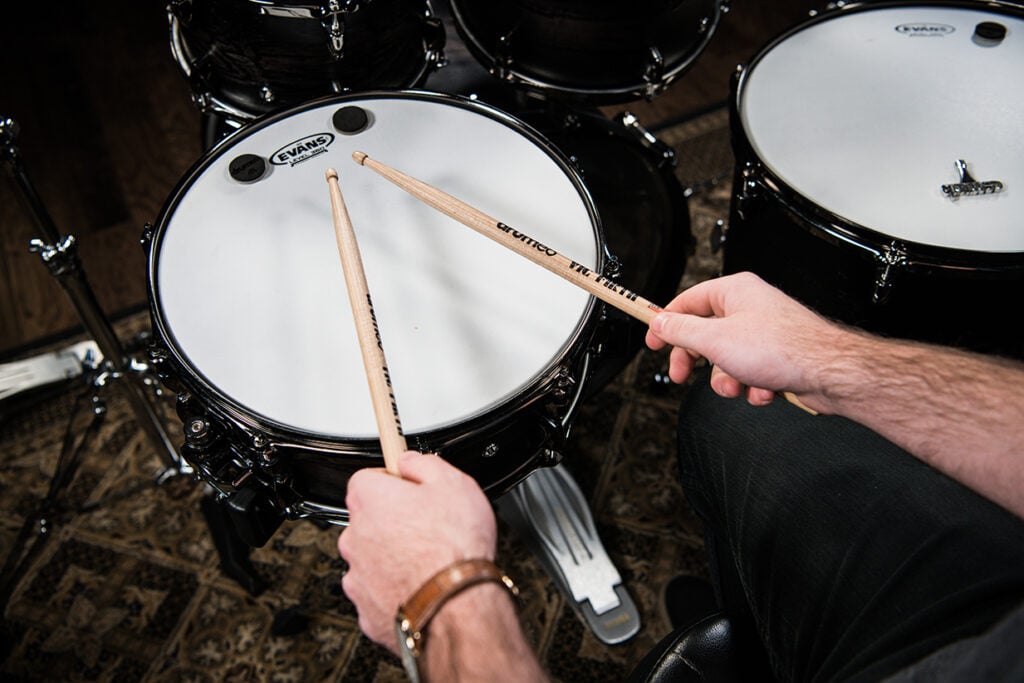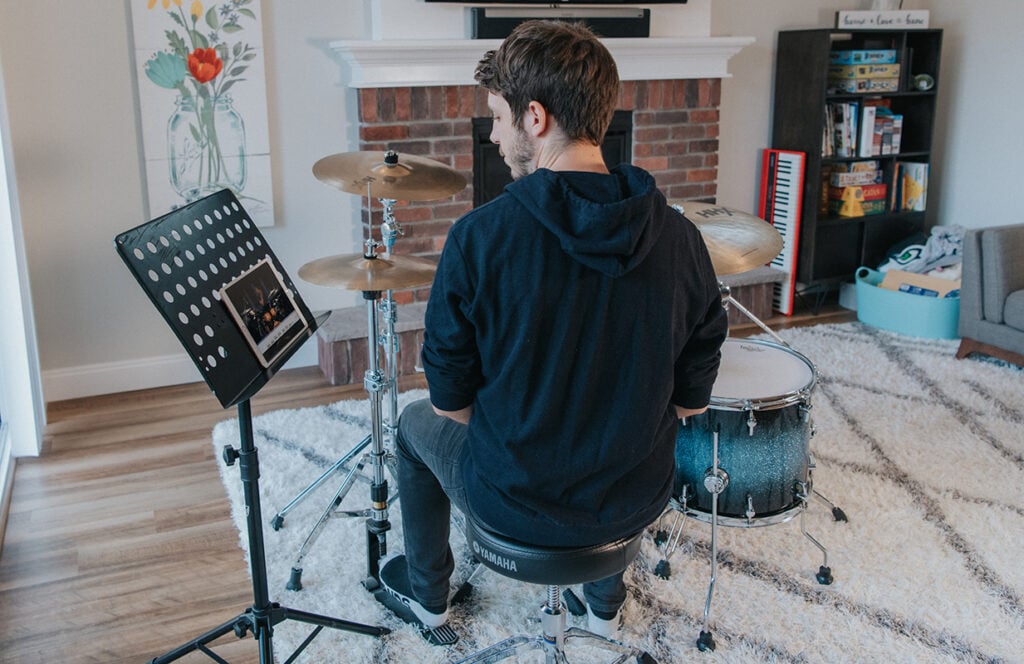When someone says “drum roll, please”, what you’re hearing is a multiple bounce roll. Also known as a ‘buzz roll’, you’ll mostly find this drum rudiment in a marching band setting; however, some drummers use it on the kit in solos and even in creative beats and fills.

To play a buzz roll (the common name we’ll use on the rest of this page), you’ll alternate hands as you would in a single stroke roll, but each stick is allowed to bounce a non-specific number of times.
Here’s what a buzz roll sounds like:
You can use this tool to practice along at the tempo that’s best for you (it’s the one Drumeo members use when practicing with the 3000+ play-along tracks inside our members area).
► Click here if you want to learn how to read drum music
The toughest part about mastering this rudiment is getting a similar amount of buzz on each hand as you perform the roll. While you may not be counting strokes, your hands should still be even and you should try to get each stick to ‘buzz’ at the same level. You can do this by pushing each stick slightly into the surface with just enough pressure to get it vibrating.
Your goal should be to make your rolls sound as smooth as butter. You should ideally be able to lead with your right hand or your left.
Here are some tips to help your buzz rolls.

When you’re first learning how to play something, it’s fine to test it out without a metronome as you get used to the pattern. But you shouldn’t go click-free for long. The metronome will help you develop a better internal clock.
You can buy a physical metronome at a music store or download a metronome app online.

The buzz roll is the only rudiment that’s somewhat ambiguous in terms of notation and structure, so it might be tempting to speed up before you’re ready.
Learn how much pressure you need to apply in both hands to get a solid and consistent buzz going. Develop control first, and speed will come later.
Be honest with yourself. Don’t just say “it’s good enough”.

If you’re a right-handed drummer, you probably default to starting rolls with your right hand. Make sure you also practice starting them with your left hand. This will help you get a more consistent sound out of both sticks and give you more confidence and control.

It’s easiest to correct your posture or grip immediately if you’re watching yourself in a mirror. Try to set up a practice pad and a snare stand in front of a full length mirror if you can.
The height of your right stick might not match the height of your left. You might notice you’re gripping your left hand too hard. Use your reflection as a window into how you’re doing. It’s like becoming your own drum teacher!

While playing in front of a mirror will help you fix issues on the fly, you might not realize when something is wrong during your practice session. Sometimes we don’t notice issues while we’re in the middle of playing – especially if we’re concentrating hard.
Whether you’re propping your phone on your dresser or capturing it all with a camera and tripod, it’s helpful to watch your practice sessions and critique yourself from a ‘third party’ perspective.
We’ve put together a playlist with drumless tracks at different tempos so you can practice this rudiment over real music:
Once you’re comfortable playing it on a practice pad or a single drum, you should move the multiple bounce roll over to the drum set and try applying it in a solo.
Here are some exercises you can try.
#1:
#2:
#3:
#4:
#5:
Once you’ve worked through these exercises, come up with your own ideas. Try switching surfaces and adding dynamics.
Learn these tunes to get comfortable with this rudiment in practice:

The trick is nailing the timing; the buzz roll starts after an 8th note rest.

Practice this tune to work on buzz rolls in 3/4.

You’ll find a nice buzz roll in this classic tune!
With enough solid practice, you should start feeling more confident in your playing. Mastering the buzz roll will get you one step closer to playing anything you want on the drums – especially classic jazz, marching music and solos.
Once you’ve got a good handle on this one, you should try the triple stroke roll and the double stroke roll.


By signing up you’ll also receive our ongoing free lessons and special offers. Don’t worry, we value your privacy and you can unsubscribe at any time.
We use cookies for traffic data and advertising. Cookie Policy »
/marketing/drumeo/lead-gen/easy-rudiments/blog-m.png)
Grab a FREE E-Book with the 15 Rudiments you need to know (and how to learn them quickly)
Enter your email and we’ll send your book instantly.
Don’t worry, we value your privacy
and you can unsubscribe at any time.